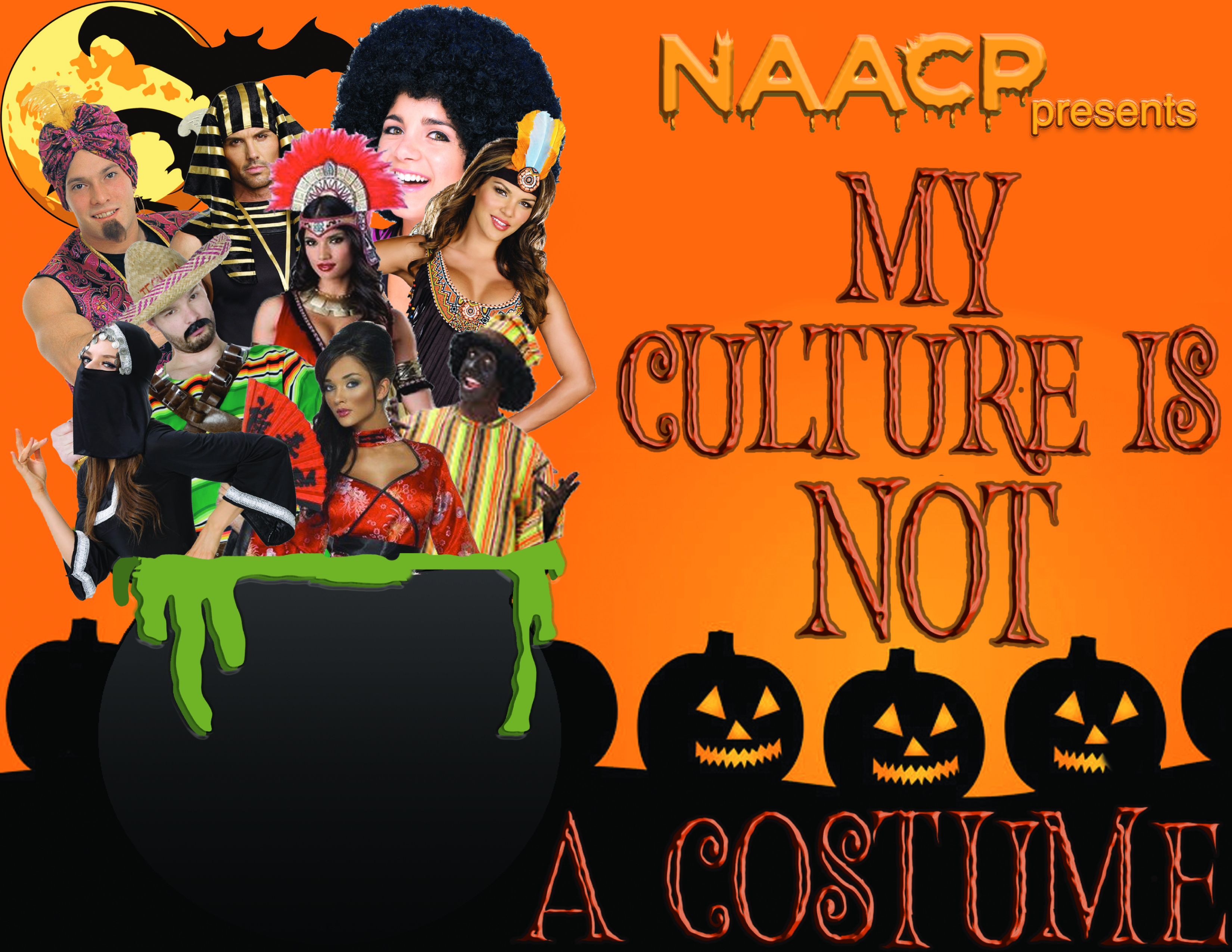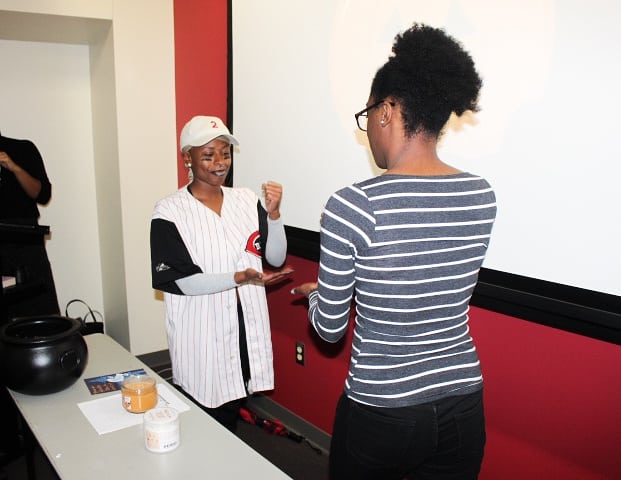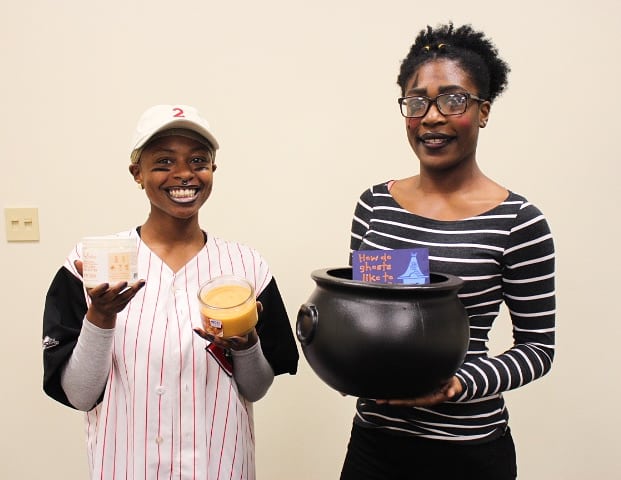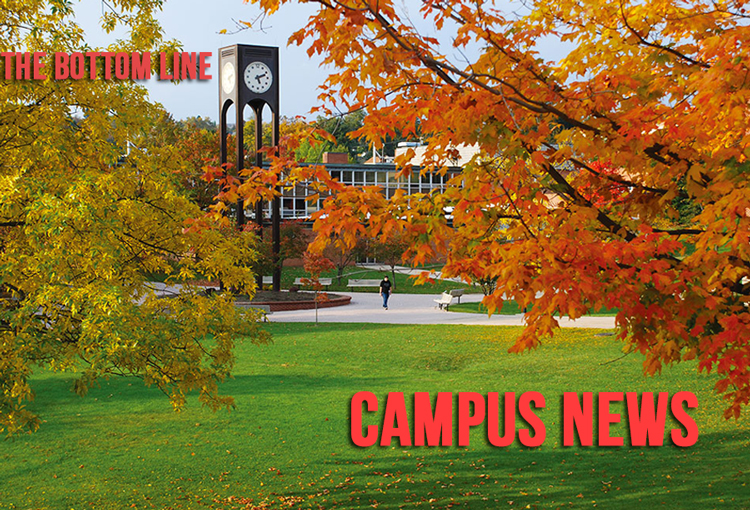NAACP Presents: “My Culture Is Not A Costume” Halloween Event
The NAACP hosted their first event of the semester, “My Culture Is Not A Costume.” The event’s purpose was to shine a light on cultural appropriation, hence its title. While cultural appropriation happens all the time, it is more common during Halloween because people are more likely to broadcast what they’re wearing and state, “it’s just a costume.”
However, it is not a “just a costume.”
It is a culture.
It is an identity.
The event, led by NAACP Vice-President Najah James, began with a slide that had several pictures of Miley Cyrus on it and posed the question, “Cultural Appreciation… or Exploitation?”
Miley Cyrus, everyone’s favorite Disney star turned outcast, grew up singing and writing Country music, but moved to Pop and Pop/Rap with her album Bangerz, released in 2013. At first, most were okay with Cyrus dipping her toes in the hip-hop music scene because it was a new sound for her, and she didn’t seem to be doing anything wrong at the time. However, in her music videos and on her performance stages, Cyrus could be seen twerking and walking around with implant-pieces, making it look like she had large hips and a very large butt, something that is commonly fetishized and sexualized in Black women. She wore gold teeth, otherwise known as “grills” and went so far as to wear mock dreadlocks at the 2015 MTV Video Music Awards.
In 2017, while being interviewed by Billboard, Cyrus was asked about Melanie Safka’s influence on her music. Cyrus responded, “she did, and I grew up with her. But I also love that new Kendrick song [‘Humble’].” She sang a few of the lyrics before finishing her comment with, “I love that because it’s not ‘Come sit on my d—k, suck on my c—k.’ I can’t listen to that anymore. […] It was too much ‘Lamborghini, got my Rolex, got a girl on my c—k’ – I am so not that.”
Cyrus was certainly exploiting and appropriating the Black culture.
After an open discussion on the matter, the event carried on and landed on another slide that featured pictures of individuals: a man dressed in a sombrero and riding a donkey, a woman wearing Native American warbonnet and a low-cut crop-top paired with a very short, fringed skirt, and a white man dressed as an “Arab man” holding a bomb.
This slide featured several rules on how NOT to appropriate someone’s culture during Halloween:
- Race, ethnicity, or any identity ‘costume’ are a NO GO!
Example(s): Middle Eastern costumes, Mexican costumes, and Native American costumes
- Black Face . . . is NOT okay! Period!
In the slides pertaining to the idea of Black face, there were several different photos used as examples. In one of the pictures, there was a trio of white people, two men and one woman. The first man’s face is painted black and he is wearing a grey hoodie with a blood stain on it. He is supposed to be Trayvon Martin, a 17-year-old, young Black man who was gunned down by George Zimmerman in 2012. The other man, portraying Zimmerman, has on a black shirt that reads ‘NEIGHBORHOOD WATCH’ and is mimicking a gun out of his right hand, which is pointed at the man who’s dressed as Martin.
Before getting to the third step, the presentation stopped to ask questions about people’s opinions on whiteface. Whiteface is defined as white stage makeup and has been used by several Black comedians and musicians, such as Dave Chappelle and Snoop Dogg. In another picture, there was a man who wore all-white attire, a white crown, a white wig, donned in whiteface, while his shirt read ‘PRIVILEGE,’ meaning that for Halloween, he was going as white privilege.
There were many mixed opinions on the debate of whiteface, with some students gearing towards it being wrong and inappropriate, and other students feeling like whiteface isn’t offensive.
One student mentioned, “the oppressed cannot oppress the oppressor.”
Another went on a tangent, stating how they felt that both whiteface and blackface are equally wrong, and that, if one side [Black people] can do whiteface, then there shouldn’t be any problems when the other side does it.
Other students, combatting their opinions opposingly, explained why whiteface will never be nearly as harmful as blackface. “When has a whiteface ever been used offensively towards white people? Whenever someone does whiteface, they are always mimicking well-off white people. Whenever white people do blackface, they are mocking slavery and other parts of black culture in an extremely offensive manner.”
The third and final step on how to avoid being offensive during Halloween advised students:
- When in doubt, look up some cosplayers! Be a character.
To cosplay means to dress as a fictitious character from a movie, TV show, comic book, video game, etc. It’s open to anyone, and those who choose to participate are able to celebrate Halloween without a problem.
Finally, the event ended with a costume contest winner being announced. The original idea was for the NAACP board to vote on who they thought was best-dressed that night. However, due to the fact that only two people dressed up, they ensued in a very intense game of Rock, Paper, Scissors. The winner would be awarded a Halloween basket, courtesy of the NAACP board, that was filled with candy, shea butter, a Fall themed candle, and a card.
The competitors, Cayla Johnson and Dynia Walker, battled it out in a best-two-out-of-three match. While the two fought hard in the quiet room, all eyes and ears watching and listening intensely, Cayla Johnson was the determined champion of the night. The event ended well for both ladies as they shared the contents of the basket, leaving everyone to go home a winner.







